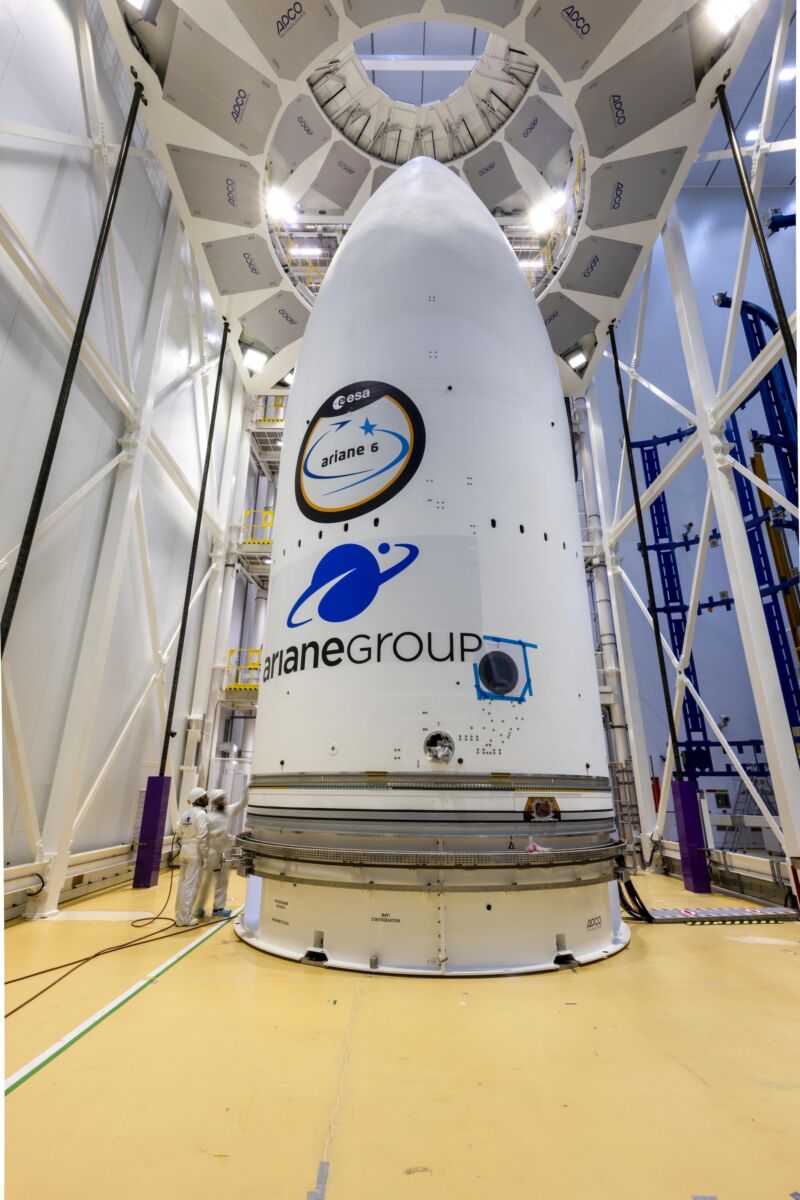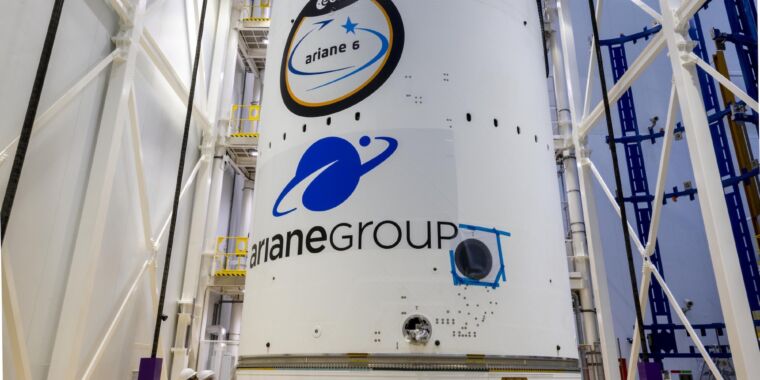
Welcome to Edition 6.48 of the Rocket Report! Fresh off last week’s dramatic test flight of SpaceX’s Starship, teams in Texas are wasting no time gearing up for the next launch. Ground crews are replacing the entire heat shield on the next Starship spacecraft to overcome deficiencies identified on last week’s flight. SpaceX has a whole lot to accomplish with Starship in the next several months if NASA is going to land astronauts on the Moon by the end of 2026.
As always, we welcome reader submissions, and if you don’t want to miss an issue, please subscribe using the box below (the form will not appear on AMP-enabled versions of the site). Each report will include information on small-, medium-, and heavy-lift rockets as well as a quick look ahead at the next three launches on the calendar.

Virgin Galactic won’t be flying again anytime soon. After an impressive but brief flurry of spaceflight activity—seven human spaceflights in a year, even to suborbital space, is unprecedented for a private company—Virgin Galactic will now be grounded again for at least two years, Ars reports. That’s because Colglazier and Virgin Galactic are betting it all on the development of a future “Delta class” of spaceships modeled on VSS Unity, which made its last flight to suborbital space Saturday. Virgin Galactic, founder by Richard Branson, now finds itself at a crossroad as it chases profitability, which VSS Unity had no hope of helping it achieve despite two decades of development and billions of dollars spent.
An uncertain future … Now, Virgin Galactic’s already anemic revenue numbers will drop to near zero as the company spends more capital to bring two Delta-class spaceships online. The goal is to start flying them in 2026. These vehicles are designed to be more easily reusable and carry six instead of four passengers. This timeline seems highly ambitious given that, at this point, the company is only developing tooling for the vehicles and won’t begin major parts fabrication until later this year. Virgin Galactic is betting on the Delta-class ships as its stock price has precipitously fallen over the last couple of years. In fact, Virgin Galactic announced a reverse stock split this week in a bid to maintain its listing on the New York Stock Exchange. (submitted by Ken the Bin)
Unpacking North Korea’s advancements in rocketry. Late last month, North Korea signaled it has made—or more accurately, is still trying to make—a pretty big leap in rocket technology. The isolated totalitarian state’s official news agency said it tested a new type of satellite launcher on May 27 powered by petroleum fuel and cryogenic liquid oxygen propellant. This is a radical change in North Korea’s rocket program, and it took astute outside observers by surprise. Previous North Korean rockets used hypergolic propellants, typically hydrazine and nitrogen tetroxide, or solid fuels, which are also well-suited for military ballistic missiles. Kerosene and liquid oxygen, on the other hand, aren’t great propellants for missiles but are good for a pure space launcher.
Who’s helping?… The May 27 launch failed shortly after liftoff, while the unnamed rocket was still in first stage flight over the Yellow Sea. But there is tangible and circumstantial evidence that Russia played a role in the launch. The details are still murky, but North Korean leader Kim Jong Un visited a Russian spaceport last September and met with Russian Vladimir Putin, who suggested Russian help for the North’s satellite launch program was on the agenda at the summit. South Korean defense officials said Russian experts visited North Korea in the run-up to the May 27 launch. If Russia exported a kerosene-fueled rocket engine, or perhaps an entire booster, to North Korea, it wouldn’t be the first time Russia has shipped launch technology to the Korean Peninsula. Russia provided South Korea’s nascent space launch program with three fully outfitted rocket boosters for test flights in 2009, 2010, and 2023 before the South developed a fully domestic rocket on its own.
ABL signs deal with a new launch customer. ABL Space Systems, which is still trying to get its light launcher into orbit, has a new customer. Scout Space announced this week it has signed a launch agreement with ABL for the launch of a small spacecraft called “Owlet-01” on the third flight of ABL’s RS1 rocket, Space News reports. Scout Space, which describes itself as focused on space security and comprehensives space domain awareness, develops optical sensors to monitor the space environment. Owlet-01 will fly a telescope designed to detect other objects in space, a capability highly sought by the US military.
Still waiting on Flight 2 … The launch agreement between ABL and Space Scout is contingent on the outcome of the second flight of the RS1 rocket, which ABL has been preparing for the last few months. ABL hasn’t provided any public updates on the status of the second RS1 test flight since announcing in March that pre-flight preparations were underway at Kodiak Island, Alaska. The first RS1 rocket fell back on its launch pad in Alaska a few seconds after lifting off in January 2023. The RS1 is capable of hauling a payload of more than 1.3 metric tons to low-Earth orbit. (submitted by Ken the Bin)
#Rocket #Report #Starship #clock #Virgin #Galactic #crossroad,
#Rocket #Report #Starship #clock #Virgin #Galactic #crossroad
